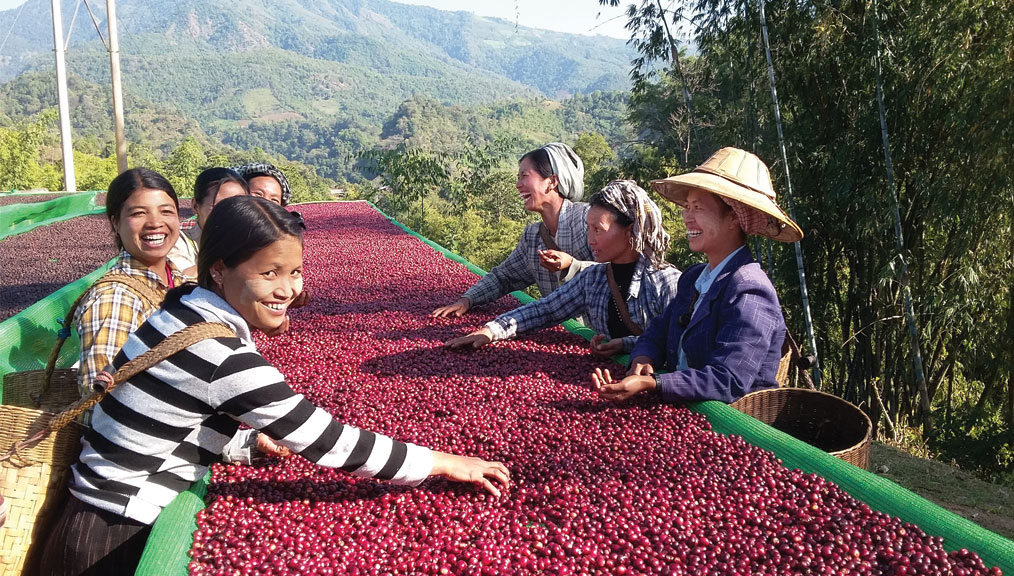Women in the Mya Ze Diin community in Myanmar’s Shan State. (Photo: courtesy of Winrock International.)
[C]offee has been growing in Myanmar since the late 1800s, but there’s been little seen outside the country in the decades since its isolationist junta that ran the state made it a global pariah. With significant political strides made toward democracy and a return to the international community, trade sanctions led by the United States have greatly eased and the world is finally getting an opportunity to experience coffee from Myanmar.
The British brought coffee to Myanmar, then called Burma, in the 1800s, but saw limited success. After Britain gave up its colonial claim after World War II, the coffee industry survived until the junta took power in 1962. The historically prosperous country fell off a political and economic cliff. But with open trade, open elections, and the first non-military president in more than a half century, decades of repressed economic energy are being released.
And coffee is coming back.
Andrew Hetzel, a consultant working with the Coffee Quality Institute in Myanmar, says, “Practically all of the coffee is arabica. The growing conditions in Myanmar are really exceptional for good coffee: similar latitude as Hawaii but with more elevation, and a stable pattern of rainfall and dry harvest months that are excellent for quality.”
Earlier this year, Myanmar Coffee Association held its second annual cupping competition. Of the sixty samples entered, fifty-six exceeded the eighty-point specialty cup quality threshold established by the SCAA. The winner was a fully washed SL34 lot from the Green Land Coffee estate of Pyin Oo Lwin, topping competitors with a score of 87.08. The coffees cupped in this year’s competition demonstrated a collective boost in quality over the previous year, showing promise for the future of specialty coffee in Myanmar.
Myanmar coffee farmers are supported by the Value Chains for Rural Development project, implemented by Winrock International and funded by USAID, the United States’ international development arm. The cupping competition was organized as part of the project with assistance from the Myanmar Coffee Association and the Coffee Quality Institute. The development project seeks to increase the productivity and profitability of smallholders in Myanmar. The program brings technical assistance to members all across the coffee value chain and draws on the expertise of volunteers to improve farmer productivity and market access.
Featured coffees from the Myanmar project were debuted at the 2016 SCAA Expo, marking the first Myanmar specialty coffee to be imported to the US. The coffee has been purchased by companies including La Colombe, Allegro, Kaldi’s, Farmer Brothers, and Rojo’s Roastery. La Colombe Coffee held a launch event at their Chinatown café on August twenty-three, welcoming two coffee producers and project staff from Myanmar, as well as officials from USAID and the State Department.
—Ellie Bradley is Fresh Cup‘s associate editor.









